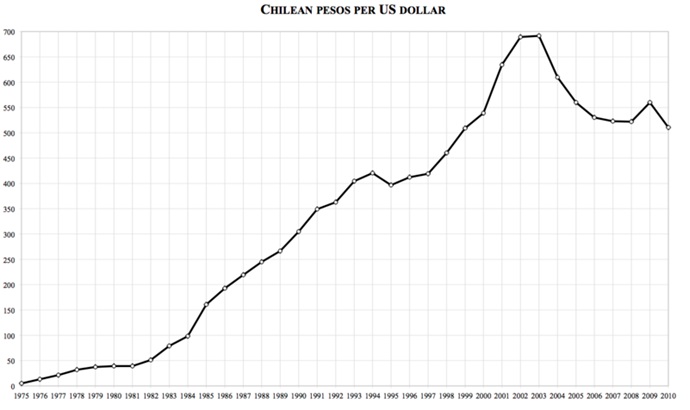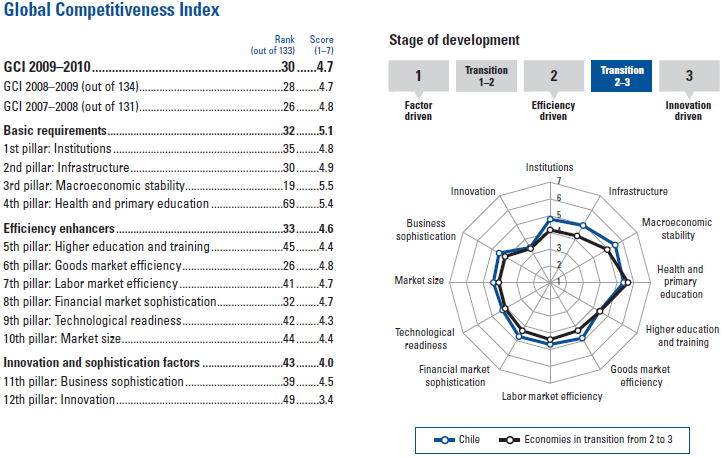China and India gather a lot of attention when talking about emerging markets. However, recent data suggests that both are fighting tough inflation. India has a lot of sociopolitical conflict and lacks water supplies for future generations. China is in the midst of a real estate boom that has all the signs of collapsing. If the Western world goes into recession, China will go with it. There are other emerging markets that offer strong alternatives, and South America is one of them.
South America has strong economic fundamentals: better demographics with younger populations who are actively expanding their income levels. Strong companies are poised to take care of the demands of the rising South American middle class. Energy, healthcare, and agriculture are some of the sectors experiencing growth. One country in particular, Chile, is the best market in the region.
The first thing you need to know about Chile is that the private savings rate is 21%. This is not a nation of over-consumers who are leveraged to the hilt with mortgage, car, and credit card debt. This is a population that saves and spends wisely. Secondly, the country itself has a positive current account balance, meaning it exports more than it imports. Not only does Chile save, it produces. Public debt is only 6% of GDP, compared to the US at 100% of GDP (if you believe our government’s numbers). The Chilean peso has strengthened relative to the US dollar, which bodes well for investors who can earn an exchange rate premium on Chilean investments.
GDP growth was 5.3% in 2010 and the unemployment rate, while high at 8.1%, is also falling. Chile is the best Latin American nation at combating inflation, and is much better at this than China or India. All signs point to a growing economy with a strong manufacturing and exporting base and a nation of frugal people with lots of discretionary income. In other words, Chile is a profit magnet.
Chile’s main industry is mining, specifically copper. In addition, Chile exports agricultural goods including a very strong selection of wines and beers. One of the great benefits of Chile is the weather in the central region, almost identical to that of Southern California, which offers a strong and consistent growing season. Chile has a strong manufacturing base in fertilizers and chemicals. Chile is currently ranked as the 23rd best country for business by Forbes. They currently have 59 free trade agreements in place, though most of their trade is with the US, China, and Brazil. Nevertheless, they are fairly diversified in their trading partners.
According to Credit Suisse, Chile is in a transition from an efficiency driven to an innovation economy. Companies, flush with cash, are expanding R&D and developing new products. Chile is ranked #11 in the Freedom Index published by the Heritage Foundation. Finally, Chile boasts a wide diversity of political ideas with 7 major political parties, is ranked higher than average in property rights support and public trust of politicians.
Probably the best news about Chile is what they don’t have, which are huge unfunded liabilities in the health and retirement sectors. Chile privatized their pension system and since has seen strong growth in retirement accounts. The best thing about privatization is the system is not a ponzi where successive generations pay for the preceding one. Each retirement account is separate unto itself and cannot be used to pilfer the funds of other pensioners. Therefore, the overall accounts cannot go bankrupt. In addition, the demographics of Chile are strong such that the pension investments themselves will continue to generate positive returns for the foreseeable future.
Chile’s health system in the cities is as advanced as western nations. Chile graduates as many doctors per capita as the US. Many Chilean doctors attend the most prestigious universities the West has to offer, and they bring that expertise home with them. Without a large social insurance system, costs are much lower at about 1/3 of what most other OECD nations pay per person. In other words, healthcare in Chile is both plentiful and cheap. And the government stays out of it so the system is not on the verge of financial collapse.
Lastly, South America has access to a plethora of clean water supply via the Guarani Acquifer. This acquifer covers 460,000 square miles in an area larger than Texas and California, and is expected to support South American residents for several hundred years.
Visit my site, Drop Shadow, for more information on potential Chilean investments.









